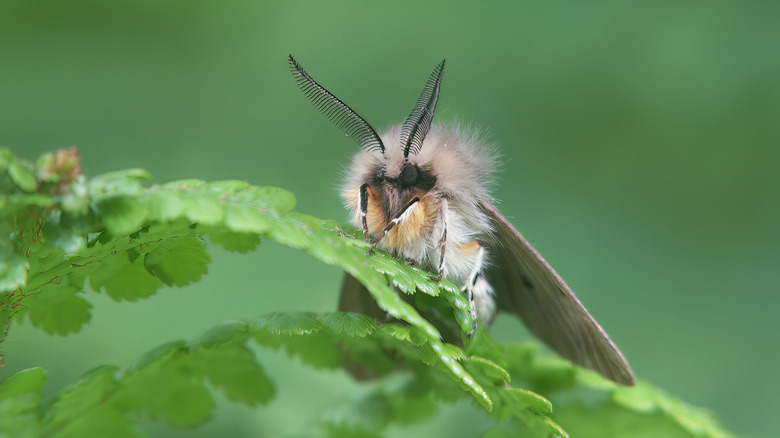Reasons Why Your Yard Is Swarmed With Moths
While we all know that insects are beneficial for our gardens and the environment as a whole, it can be a little unnerving when your yard is suddenly filled with a large swarm of the same type of insect. While we know that dragonflies sometimes swarm yards if there is enough water and food for them, another insect that can swarm in a particular area with seemingly little warning is the moth. So, to find out more about why moths may swarm in a yard, we spoke to Allan Cabrero, Ph.D., entomologist and National Science Foundation postdoctoral research fellow at the Smithsonian National Museum of Natural History.
According to Cabrero, there are some environmental reasons that may cause a lot of moths to gather in one area. "This would depend on the life stage you are observing, [as] having the ideal host plant could attract adult moths who will lay eggs." He adds, "These eggs would hatch, leading to an increase in caterpillars of moths. The right flowering plants can serve as an attractant to species that visit flowers."
First, you may want to identify the particular type of moth that you are seeing so you can figure out what plant may be attracting them — like the invasive spongy moth which lays clusters of eggs on particular trees. However, Cabrero also mentioned that a moth swarm can be caused by other factors, explaining, "The major non-environmental attractant to moths would likely be lights on at night. Depending on the bulb used, some can be excellent at attracting moths and other insects."
What should you do about a moth swarm in your yard?
If your moth swarm is being caused by your outdoor lights, then simply switching from regular light bulbs to LED bulbs with warm yellow or orange hues can solve the problem. However, if an environmental factor is bringing all the moths to your yard, it may be a little more complicated. When it comes to getting rid of them, Cabrero explains, "[It] depends on the species you are observing in your yard. If you are observing many pest species, it is likely your plants are attracting them. For example planting many tomatoes may likely attract the tomato hornworm moth (Manduca quinquemaculata)."
While you may want to get rid of your moth problem as quickly as possible (especially if it involves tomato hornworms, which are one of those worms you never want to see in the garden), you should think twice before turning to insecticides. "Most insecticides target all insects, including beneficial ones, so they should only be used as a last resort," notes Cabrero, adding, "I would reserve insecticide if only you are having an outbreak of pest species attacking your lawn, vegetables, or garden plants."
Before choosing to kill your moths, you will want to consider the type you are dealing with and its importance to the environment because moths are often beneficial pollinators. Plus, moths tend to make up the majority of the diets of bats and are an important food source for songbirds — so if you leave your swarm alone long enough, nature will probably take care of it. To learn more about insects and their behaviors, follow Cabrero on Instagram.

